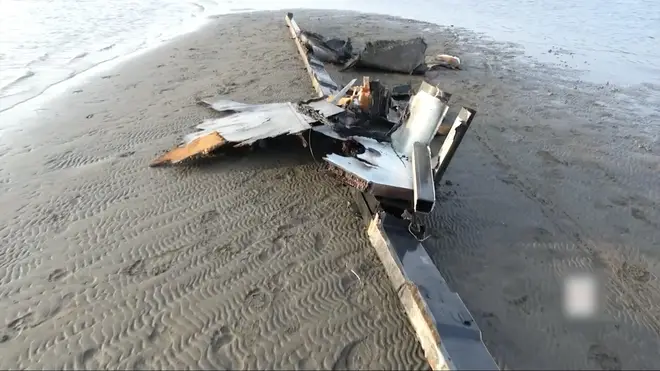
Paul Brand 10am - 12pm
24 February 2024, 22:19 | Updated: 24 February 2024, 22:20

British and US forces have struck more than a dozen Houthi targets in Yemen in response to the militants ongoing attacks on shipping in the Red Sea and Gulf of Aden.
The Iran-backed militia group has amped up their attacks on ships in the Red Sea and Gulf of Aden, including a missile strike this past week that set fire to a cargo vessel.
Fighter jets from the UK and US hit 18 sites, targeting missiles, launchers, rockets, drones, and unmanned surface and underwater vehicles, according to US officials.
Following the initial strike on January 12, the US and UK have coordinated a total of four combined operations against the Houthis.
The US has also been carrying out almost daily strikes to take out Houthi targets, including incoming missiles and drones aimed at ships, as well as weapons that were prepared to launch.

Read More: Yemen’s Houthis continue attacks despite air strikes
Read More: British-owned cargo vessel attacked in Red Sea in suspected Houthi rebel assault
US fighter jets launched from the USS Dwight D Eisenhower aircraft carrier, which is based in the Red Sea.
President Joe Biden and other senior leaders have repeatedly warned that the US will not tolerate the Houthi attacks against commercial shipping. But the counter-attacks have not appeared to diminish the Houthis' campaign against shipping in the region, which the militants say is over Israel's war against Hamas in the Gaza Strip.
The group has launched at least 57 attacks on commercial and military ships in the Red Sea and Gulf of Aden since November 19, and the pace has picked up in recent days.
"We've certainly seen in the past 48, 72 hours an increase in attacks from the Houthis," Pentagon spokeswoman Sabrina Singh said in a briefing on Thursday. And she acknowledged that the Houthis have not been deterred.
"We never said we've wiped off the map all of their capabilities," she told reporters. "We know that the Houthis maintain a large arsenal. They are very capable. They have sophisticated weapons, and that's because they continue to get them from Iran."

Read More: US navy destroyer shoots down Houthi-claimed missile in Red Sea
Read More: British warships do not have missiles to take out Houthi rebel bases in latest armed forces blow
There have been at least 32 US strikes in Yemen over the past month and a half; a few were conducted with allied involvement. In addition, US warships have taken out dozens of incoming missiles, rockets and drones targeting commercial and other navy vessels.
Earlier on Saturday, the destroyer USS Mason downed an anti-ship ballistic missile launched from Houthi-held areas in Yemen towards the Gulf of Aden, US Central Command said, adding that the missile was probably targeting MV Torm Thor, a US-flagged, owned, and operated chemical and oil tanker.
The US attacks on the Houthis have targeted more than 120 launchers, more than 10 surface-to-air-missiles, 40 storage and support building, 15 drone storage buildings, more than 20 unmanned air, surface and underwater vehicles, several underground storage areas and a few other facilities.
The rebels' supreme leader, Abdul Malik al-Houthi, announced this past week an "escalation in sea operations" conducted by his forces as part of what they describe as a pressure campaign to end Israel's war on Hamas.
But while the group says the attacks are aimed at stopping that war, the Houthis' targets have grown more random, endangering a vital waterway for cargo and energy shipments travelling from Asia and the Middle East onwards to Europe.
During normal operations, about 400 commercial vessels transit the southern Red Sea at any given time.
While the Houthi attacks have only actually struck a small number of vessels, the persistent targeting and near misses that have been shot down by the US and allies have prompted shipping companies to reroute their vessels from the Red Sea.
Instead, they have sent them around Africa through the Cape of Good Hope - a much longer, costlier and less efficient passage.